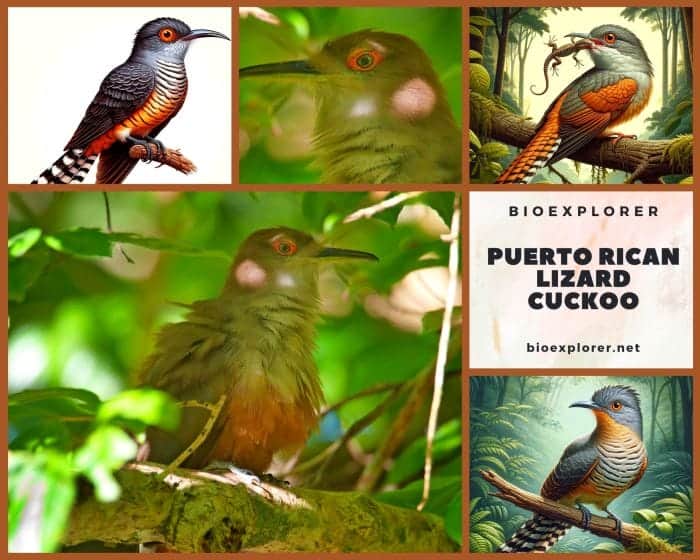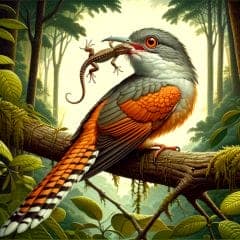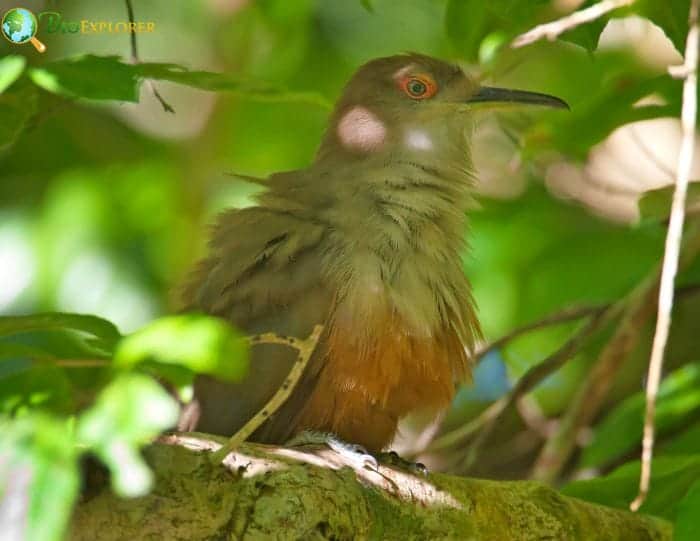
| Animalia | Cuculiformes | Cuculidae | Coccyzus | Coccyzus vieilloti |
The aptly named Puerto Rican Lizard Cuckoo (Coccyzus vieilloti) is a secretive 16-19-inch bird feeding primarily on Anolis lizards. Endemic to Puerto Rico and possibly once inhabiting Vieques Island, this rainforest dweller prefers dense woods and limestone hills from sea level to mountain peaks.


- Common Name(s): Puerto Rican Lizard Cuckoo
- Family: Cuculidae
- Body Dimensions: 40–48 cm
- Male Plumage Color(s): Gray-Brown Upperparts, Gray Throat and Breast, Tawny Belly
- Female Plumage Color(s): Gray-Brown Upperparts, Gray Throat and Breast, Tawny Belly
- Habitat: Variety of Wooded Habitats
- Diet: Insects, Lizards, Frogs
- Native Countries: Puerto Rico
- Continent(s): North America
- Taxonomy Classification Year: 1850
- Taxonomist(s): Charles Lucien Jules Laurent Bonaparte
Puerto Rican Lizard Cuckoo Fun Facts

- Its cryptic gray-brown plumage provides camouflage while stealthily stalking prey on branches and the forest floor.
- Earning local names like “big ape bird” and “rain bird” for its loud, monkey-like vocalizations believed to portend showers, the Puerto Rican Lizard Cuckoo often hears before being seen.
- It perches motionless for long periods before swiftly snatching adult insects, larvae, frogs, and lizards.
- Loose platform nests of sticks high in trees yield typical clutch sizes of 2-3 eggs. Otherwise, the breeding habits of this little-studied species remain nebulous[1].
- While IUCN Red List assessment data on population sizes and trends is lacking, the Puerto Rican Lizard Cuckoo’s range spanning protected forests across its namesake island contributes to a designation of Least Concern.
- Still numbering an estimated 2,200-3,000 mature individuals in the wild, no major threats currently jeopardize this enigmatic bird.
- As an integral mid-canopy predator of Puerto Rican rainforest ecosystems, sustaining adequate connected forest habitat will benefit the Puerto Rican Lizard Cuckoo.
Comprehensively surveying for nests and studying breeding ecology should further inform the conservation status of this noise-making hunter named for its primary prey.
Monitoring potential future pressures from climate change, Habitat Loss, and competition in this avian apex predator’s specialized niche will help secure the rain-calling, lizard-gobbling Puerto Rican Lizard Cuckoo.
Suggested Reading: Native Birds of Puerto Rico
Cite This Page
APA7MLA8Chicago
BioExplorer.net. (2025, May 04). Puerto Rican Lizard Cuckoo. Bio Explorer. https://www.bioexplorer.net/animals/birds/puerto-rican-lizard-cuckoo/.
BioExplorer.net. "Puerto Rican Lizard Cuckoo" Bio Explorer, 04 May 2025, https://www.bioexplorer.net/animals/birds/puerto-rican-lizard-cuckoo/.
BioExplorer.net. "Puerto Rican Lizard Cuckoo" Bio Explorer, May 04 2025. https://www.bioexplorer.net/animals/birds/puerto-rican-lizard-cuckoo/.










